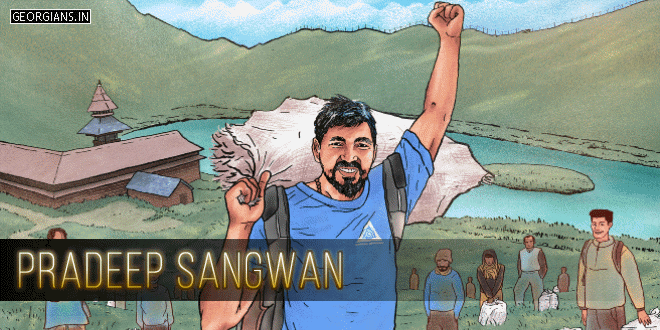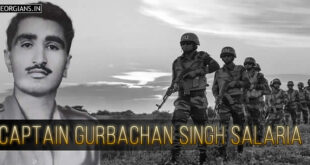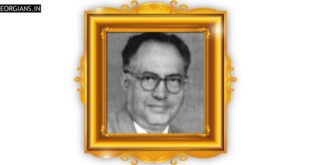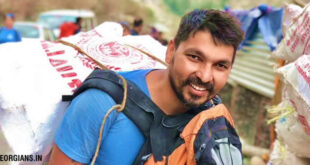I had always been fond of trekking and travelling. Interaction with shepherds made me realise how these simple people had a more responsible and sustainable lifestyle than urban educated people, inspiring me to make cleaning the Himalayas my life’s mission.
Pradeep Sangwan
My father was an Army officer. It was his dream that I should join the Indian Army. I was sent from my village Jhojhu Kalan in Charkhi Dadri district of Haryana to Rashtriya Military School, Ajmer. I appeared for the NDA exam in 2004 but couldn’t clear the interview. I then enrolled for BA in DAV College, Chandigarh, but dejected after the NDA rejection, I had given up on pursuing education seriously.
I had been good at sports in school and was also fond of trekking, travelling and music. My initial interaction with the mountains was quite casual, not serious enough to turn into a fascination. After graduation, I went to Mumbai for a diploma in event management but came back wanting to do something different.
In 2009, I decided to open a small café at Kothi village, the last village on the Manali highway towards Rohtang Pass. My father was a typical Indian parent with usual expectations from his kids, but still, he gave me the initial chance to do something with my life. That was the only time my father ever funded me for a project. The next three years, I connected with many travellers there. Their stories inspired me a lot. A community of shepherds used to camp opposite my café. I would find their lifestyle quite fascinating. I started spending time and going with them, eventually getting distracted from my café, that had been doing reasonably well, even featuring on ‘Highway on My Plate’.
I wanted to shut down my café and go into exploration full-time. My father lost it this time: “You are not going to do anything in life,” and totally stopped supporting me.
Over the next two years, I explored the Himalayas, trekking to all major trails. There had been a boom in the travelling industry, particularly after movies like ‘3 Idiots‘ and ‘Yeh Jawaani Hai Deewani‘. I got many offers for a travel startup but wanted to do something different and meaningful. The turning point came during a trek from Chandratal to Surajtal (in Spiti). We had to abandon it midway due to bad weather, forcing us to seek help from some Gaddi shepherds. I stayed with them for three days, observing their sustainable lifestyle despite living in such harsh conditions, unlike affluent and educated urban people who came demanding their bonfires and pizzas, giving nothing back to nature and leaving the trash behind instead. The disparity between the two communities was striking and disturbing. That was when the idea of starting Healing Himalayas concretised in 2014, a platform for trekking and travelling with purpose.
I again went back home and told my father about my plans. But he pressured me to get engaged to a girl of his choice. I gave in but soon realised my mistake. I called up the lady and told her about my life goals. My father threw me out. I just had a Bolero and a few clothes. That was in 2015. I went to Delhi and worked for a friend for Rs 30,000 a month for four months so as to earn some money to register my foundation.
In 2016, I registered Healing Himalayas and headed back to Himachal. The initial years were tough. I sold off my vehicle to fund cleaning drives. I would borrow money from friends, sometimes crashing with them, often eating langar at Manikaran. I had been working hard and passionately but had no idea about making my foundation self-sustainable. In 2018, during a cleaning drive at Kheerganga, we requested some trekkers to carry some of our trash bags down. One of them was the head of CSR funding at Dunnhumby. He called me soon and gave us our first CSR donation of Rs 3 lakh that sustained us for a year.
I had been a dreamer initially, but I was learning the ropes as I went along, acquiring knowledge about environment, pollution and government policies. There were hardly any funds or volunteers initially, but I worked solidly. There were many problems. We would bring down waste; sometimes the civic body had no infrastructure to process it. There were transportation issues and taboos about garbage collection. We then started material recovery facilities (MRF) or waste collection centres, involving locals. We hold cleaning treks from March to November almost every weekend. We have cleared over 8 lakh kg of non-biodegradable waste from the Himalayas. The foundation has five MRFs now wherein we collect 4.5 tonnes of waste per day.
At 37, I am the youngest among four siblings, an elder brother and two sisters. My only regret is that despite being the most educated in my family, I haven’t been able to do anything for them. My father, a khap pradhan, had to sell off his land. Perhaps, someday I will be able to buy it back for him. My father is very proud of me now and sometimes participates in my cleaning drives.
Today our Prime Minister shared about the work we do to preserve Himalayas in Mann ki Baat. I am extremely humbled and honoured, it’s only possible because of your contribution, participation and love.
Gratitude 🤗☘️
Himalayas 🏔@RandeepHooda pic.twitter.com/otem9guSUa— Pradeep Sangwan (@iPradeepSangwan) December 27, 2020
The first mention about Healing Himalayas in ‘Mann ki Baat’ in December 2020 gave us recognition. Funds started trickling in. Film producer Pragya Kapoor had helped built our first MRF. Sony Pictures funded a CSR project, enabling us to build four more MRFs and 17 cleaning drives. The second mention in the 100th episode last month has given us validation. Challenges will be easy to resolve now. I hope to build MRFs in all districts of Himachal.
~ The writer is an environment activist
A different approach to reach out millions and put a stop to littering.
We are blessed with the most magnificent country let’s embrace it by focusing on our duties.
I love my #bharat ❤️#HealingHimalayas pic.twitter.com/8sPqCbUCnP
— Pradeep Sangwan (@iPradeepSangwan) September 25, 2022
 Georgians Rashtriya Military Schools
Georgians Rashtriya Military Schools







